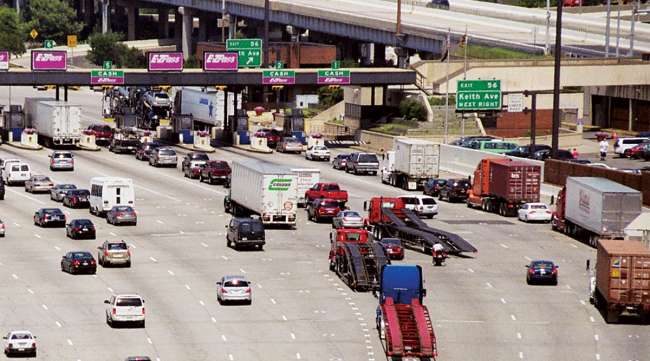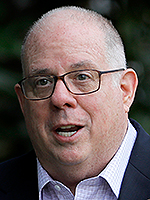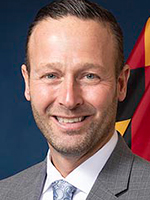Staff Reporter
Maryland Framework Offers Connected, Automated Vehicle Guide

[Stay on top of transportation news: Get TTNews in your inbox.]
With an eye toward the future of transportation technology, Maryland Gov. Larry Hogan released the state’s Connected and Automated Vehicle Strategic Framework.
While the transportation sector adapts to new technologies, the framework is meant to inform and guide industry representatives as they shape their own plans for CAV deployment. The framework offers a description of Maryland’s CAV landscape today while outlining five focus areas for the future: public education and outreach, planning and policy, early deployment and testing, workforce development and infrastructure.
According to the framework, CAV technology can save lives, improve the movement of goods and expand mobility options for people, especially the elderly and disabled. In addition to personal vehicles, CAV technology can equip longhaul freight trucks, smaller delivery vehicles, transit shuttles and on-demand taxi services.

Hogan
“Connected and automated vehicles have the potential to significantly help us achieve our goals to improve roadway safety and increase mobility for countless communities,” Hogan said. “Maryland is calling on all state and local agencies, private and academic partners and the public to develop implementation plans that align with CAV technology strategies in this framework.”
The framework calls for the prioritization of freight-centric CAV strategies. Maryland’s freight corridors carry about $300 billion in goods annually, and the Port of Baltimore and BWI Thurgood Marshall Airport serve as important cargo hubs.
Maryland Connected and Automated Vehicle Strategic Framework by Transport Topics on Scribd
In addition to supporting the vitality of the freight industry, CAV technology may save lives. Driver-assist vehicle features, such as automatic braking and adaptive cruise control, can play a role in improving roadway safety. The framework notes motor vehicle crashes remain a leading cause of death, accounting for 534 fatalities in Maryland in 2019.

Slater
“If implemented safely and effectively, self-driving vehicles have the potential to save lives by reducing traffic crashes,” Maryland Department of Transportation Secretary Gregory Slater said. “I am proud of the work being done to advance Maryland into the future while maintaining our commitment to reaching zero deaths on our roadways.”
The Maryland CAV Working Group led the effort to develop the framework, which includes input from about 600 respondents. Input was gathered from research and academic institutions, emergency responders, various government representatives, vehicle manufacturers, technology developers and members of the public with an interest in CAV technology.
Established in 2015, the CAV Working Group is composed of state and local government officials, highway safety groups, academics and members of the private sector and automotive industry. The group evaluates the latest research, coordinates with other agencies and keeps track of federal and state laws, policies and programs.

In this special two-part year in review, we look at the technology and regulatory developments that will help you and your business in 2021. Transport Topics Reporter Eleanor Lamb and Managing Editor for Features Seth Clevenger discuss HOS, software, equipment and more. Hear a snippet, above, and get the full program by going to RoadSigns.TTNews.com.
To help craft policies, the CAV Working Group created four “subgroups” to focus on freight, policy, emergency responders and technical considerations. Each subgroup is responsible for researching, exchanging information and forming recommendations related to how Maryland should deploy CAV technology.
The framework encourages industry representatives to get involved in CAV technology implementation in their communities. Additionally, the framework urges state and local transportation agencies to incorporate CAV technology considerations into all planning and policy documents.
“The release of this framework marks a milestone in Maryland’s efforts to realize the incredible benefits CAV technology can achieve and sets the stage for how Maryland wants CAV to be integrated within our communities,” said MDOT Motor Vehicle Administrator Christine Nizer, who also serves as co-chair of the Maryland CAV Working Group.
Want more news? Listen to today's daily briefing:
Subscribe: Apple Podcasts | Spotify | Amazon Alexa | Google Assistant | More




